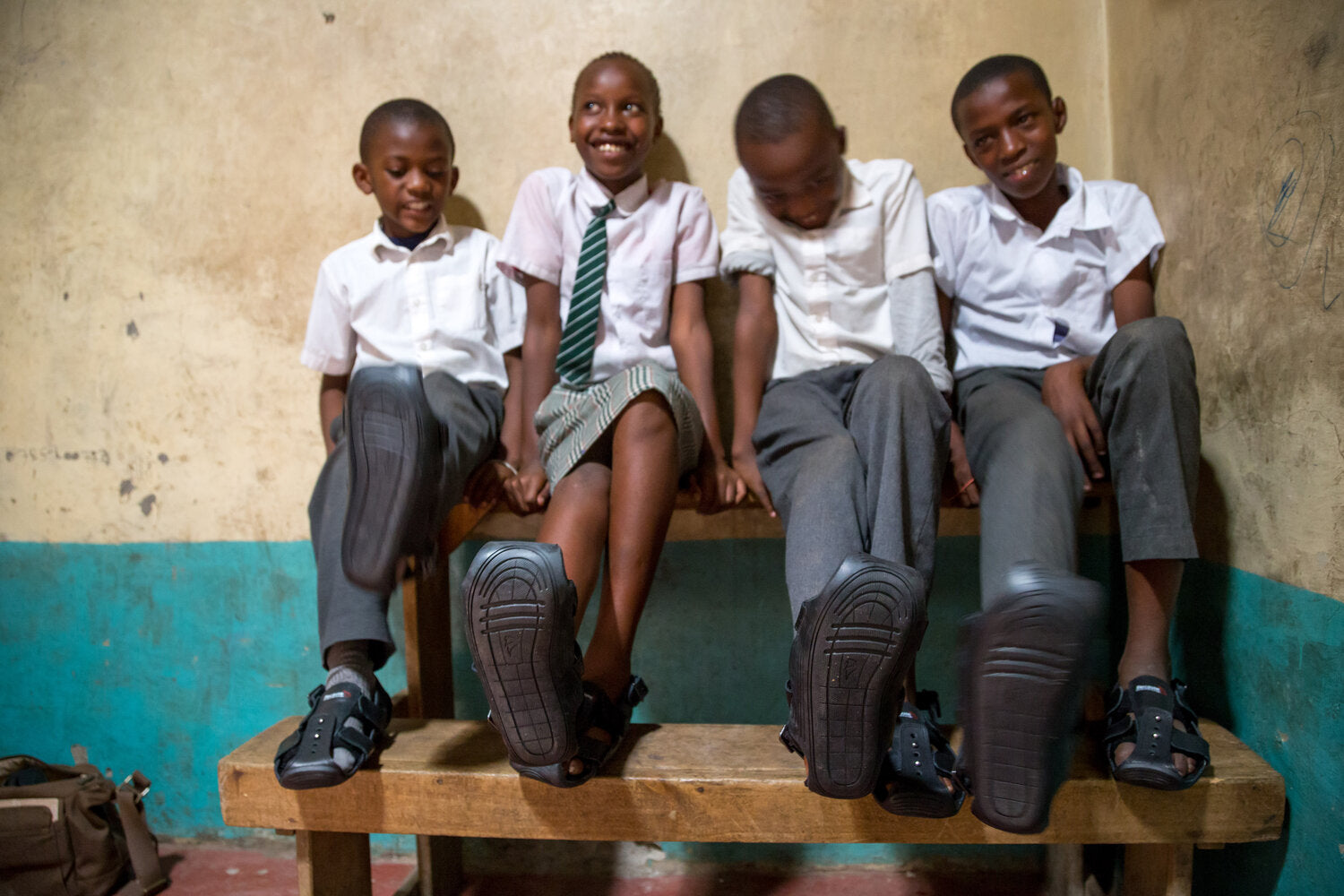Revisiting The Shoe That Grows

Because International views “innovation” as a verb instead of a noun. While ideas can occur in an instant, innovation is a process. Creating The Shoe That Grows has been an ongoing process for more than 10 years. It’s a process and a product that is still being perfected.
The Shoe That Grows has gone through many iterations since Kenton Lee’s initial idea in 2007, and each update has been important to making The Shoe the best it can be.
Part of the innovation process has always involved getting The Shoe to real kids and testing it in real life. In 2018, Mark Hewes of Tandem Lens Digital Storytelling traveled to Kenya to work with East Africa Distribution Partner Japheth Opondo to revisit communities who had been putting The Shoe That Grows to the test.
The group visited a school called Maximum Impact Centre in Nairobi, Kenya, where students had been wearing The Shoe That Grows for over a year. They worked alongside four kids to hear about their experiences, to see how they’d been holding up, and confirm whether or not they had met the needs of the children’s lifestyles. They interviewed a 12-year-old girl, Miriam, and three boys: Vincent, age 7; Obriolizon, 9; and Dennis, 13.
Mark described the visit, “We were in an empty classroom with chipped red cement floors and smeared walls. Backpacks hung on the wall, and we could hear the preschoolers chattering as they ate lunch in the room next to us.
“Though English is taught alongside Swahili in Kenyan schools, sometimes our accents made it tough to understand each other. I couldn’t tell if this—or shyness in seeing strangers with video equipment—is what caused the four students to hesitate during the interview.
“Thankfully Japheth got the kids to laugh and open up. I had no idea what he was saying—it was in Swahili—but whatever it was, the kids sure found it entertaining.
“‘Maybe you’re making fun of us,’ I joked to Japheth. ‘We’d never know.’ He just grinned even bigger.”
The children said they had adjusted the shoes to grow with their feet over the last year and a half. Two of the students’ shoes were in good enough condition to pass down to younger kids, but the soles of the other two pairs were wearing thin.
“I like them,” Miriam said. “They help me coming to school and to my friends’ and uncle’s place.” She said the shoes protected her feet from broken bottles on the ground.
“My favorite thing is I run fast to church,” she said with a smile.
Even with the expandable straps, Obriolizon’s feet were pushing up against the edge of his shoes. He said he liked to wear the shoes to play soccer.
“I like them because they are good,” Vincent said, “I love going to play in them.” All the children agreed that their shoes made them feel good.
Japheth replaced the four old pairs of The Shoe That Grows with new ones. The old shoes varied in color—one pink pair, one blue, another tan. The new batch were all black to be more consistent with the school uniforms.
Bringing back the older shoes to the Idaho headquarters allows for critical evaluation and constant improvements. The Shoe That Grows should not only be growing on kids feet around the world—growing their opportunities and growing their confidence—but also growing in its design and functionality.
At Because International innovation is a process—one that achieves its purpose when kids in poverty are better able to achieve theirs! Join us in supporting innovation that makes a difference.



